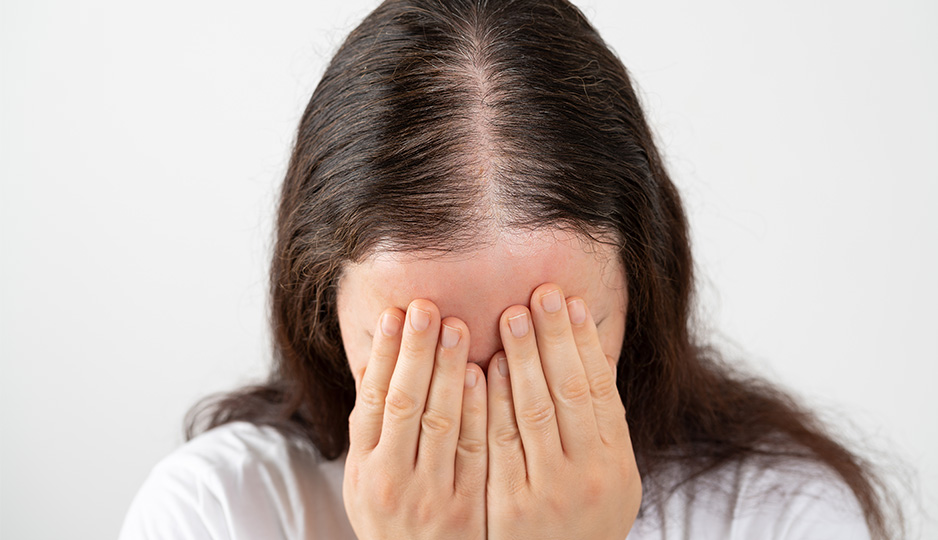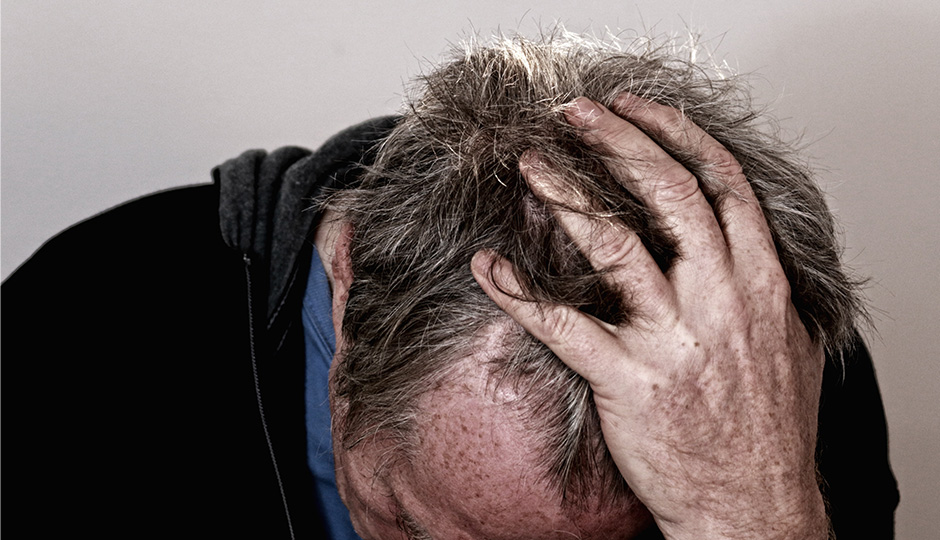Hair loss for men and women is a complex condition influenced by genetics, hormones, nutrition, lifestyle, health, and external factors. Pinpointing the underlying cause helps guide effective treatment and prevention strategies.
Hair Follicle Biology and Growth Cycle
Hair growth follows a natural cycle that consists of four phases:
- Anagen (growth): A two-to-eight-year phase where active cell division in the follicle produces hair shafts.
- Catagen (transition): A two-week period where follicles shrink.
- Telogen (rest): A two-to-three-month resting phase before shedding.
- Exogen (shedding): Old hairs are released as new anagen hairs emerge.
Disruptions to the natural growth cycle can lead to thinning hair and hair loss. In some cases, your hair follicles can become so damaged that they are unable to produce hair, causing permanent loss.
Genetic Factors
Hereditary hair loss, or androgenetic alopecia, is the most common cause of thinning and baldness. It results from genes that make hair follicles sensitive to dihydrotestosterone (DHT), causing gradual miniaturization of follicles and reduced hair growth.
Hormonal Changes
Fluctuations in hormones can trigger both temporary and permanent hair loss:
- Pregnancy and childbirth (postpartum shedding)
- Menopause and estrogen decline
- Thyroid disorders (hypothyroidism or hyperthyroidism)
- Polycystic ovary syndrome (PCOS)
- Initiation or discontinuation of hormonal birth control
These shifts disrupt the normal hair cycle, often leading to increased shedding or pattern thinning in both men and women.
Stress and Physical Shock
When the body undergoes severe physical or emotional stress—such as surgery, major illness, or psychological trauma—many hair follicles enter the resting (telogen) phase simultaneously. This condition, telogen effluvium, causes noticeable shedding 2–4 months after the stressor and usually resolves once the trigger is removed.
Autoimmune Disorders
In autoimmune hair loss, the immune system attacks hair follicles. Alopecia areata causes patchy bald spots as the immune system targets your hair follicles, while cicatricial (scarring) alopecia destroys follicles permanently, leading to irreversible hair loss. Early diagnosis and treatments like corticosteroid injections can encourage regrowth in alopecia areata and prevent further scarring in cicatricial forms.
Medical Treatments
Some medical treatments and therapies disrupt the hair’s growth phase (anagen):
- Chemotherapy and radiation therapy often lead to rapid, widespread hair loss (anagen effluvium).
- Scalp cooling caps during chemo may reduce follicle damage.
Hair typically regrows several months after stopping treatment, though texture or color may differ initially.
Nutritional and Metabolic Factors
Adequate nutrients are essential for healthy hair growth. Deficiencies linked to shedding include:
- Iron and zinc
- Biotin (vitamin B7)
- Vitamins D and B12
- Protein
Restricted diets, malabsorption, or chronic conditions can deplete these nutrients, slowing hair production and increasing breakage.
Medications and Supplements
Hair loss can be a side effect of many drugs, including:
- Anticoagulants (blood thinners)
- Beta-blockers and antidepressants
- Acne treatments and antifungals
- Certain hypertension and gout medications
Physical and Chemical Damage
Repeated tension from tight hairstyles such as ponytails, braids, or extensions can lead to a temporary hair loss condition known as traction alopecia. Using hot styling tools and harsh chemical treatments, like bleaching, perms, frequent coloring, or chemical straightening, can damage your hair and weaken hair follicles. To protect your hair, consider gentler protective styles, minimize heat styling, and space out chemical services to preserve follicle integrity.
Infections and Scalp Conditions
Scalp health issues can interrupt hair growth. Tinea capitis, or ringworm, causes patchy, scaly bald spots that are treatable with antifungals. Psoriasis and seborrheic dermatitis lead to inflammation and flaking that may loosen hairs. Proper medical treatment of the underlying scalp disorder usually allows hair to regrow once symptoms subside.
Next Steps and Prevention
Hair loss has several causes, including genetic, hormonal, immune, environmental, and lifestyle factors. Understanding how each of these factors contributes to your hair loss is vital to finding the best solution for your condition.
At LH Hair, our team of professionals is an expert in all types of hair loss at any stage. We take pride in offering our clients a wide range of proven, effective solutions designed to meet their specific needs. To learn more about the root causes behind your hair loss and what you can do about it, contact us today and schedule your FREE initial consultation.



